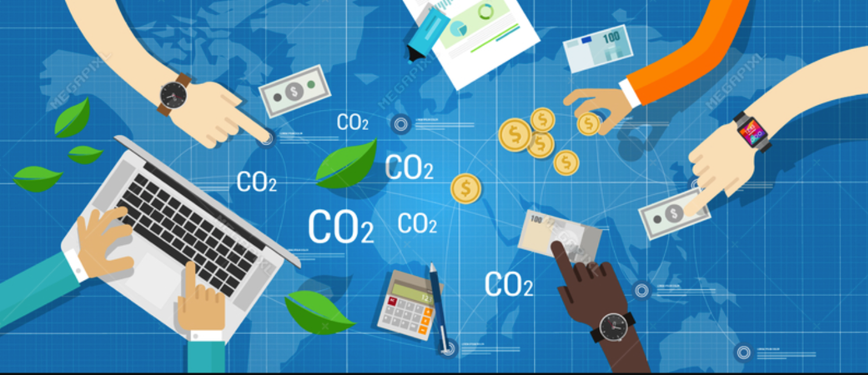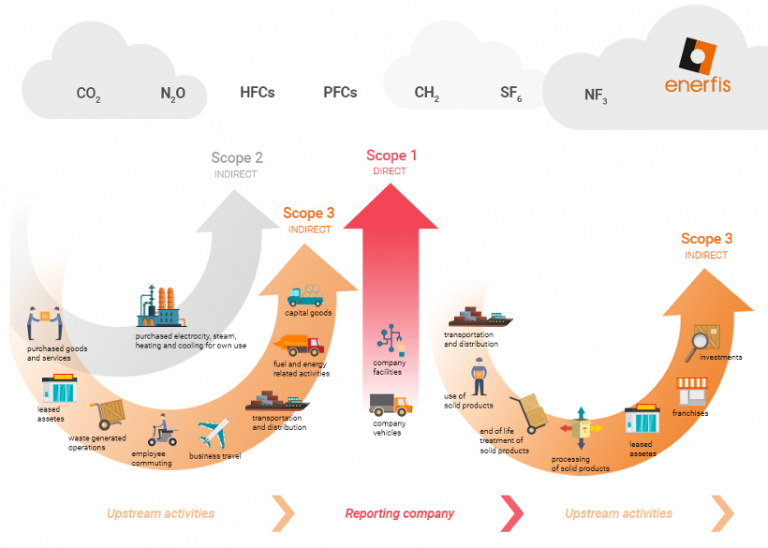Přehled kategorií
- All
- Analysis (1)
- Building certification (3)
- Carbon footprint (2)
- Metering (1)
- Uncategorized (8)
O našem blogu
Přečtěte si, proč tento blog píšeme. Najdete zde také informace pro přispěvovatele.
Carbon neutrality for companies – what does it mean and how to achieve it?
In the last couple of years, carbon neutrality has become a global issue and companies are reacting – some of them are even building a part of their philosophy on carbon neutrality, mostly because the company's attitude towards climate became an essential factor in customer behaviour. Polls have shown that over 60 % of respondents in the USA and Great Britain consider the climate change as a serious issue. Either way, it is more than clear that almost every company in the world – from small family firms to international corporations, will have to adapt to carbon neutrality, if they will be willing to gain new clientele, or at least maintain the current one.

How does a carbon neutral company look?
First of all, we need to point out that a “carbon neutral company” as a company that has zero carbon emissions, doesn’t exist and probably won’t exist for a long time. Despite that, we can still see companies showing off their “carbon neutrality” badges, so: how exactly does a company become carbon neutral according to internationals standards? The answer is a combination of these two methods:
- The company decreases its CO2 emissions by modifying its operation – in this case, energy management plays an important role, since energy management allows the company to analyse its energy consumption and make the right measures to lower it, thus decreasing carbon footprint and also saving expenses.
- The company compensates its CO2 emissions, for example by supporting the Amazon rainforest or construction of wind turbines – this process is called carbon offset.
How to achieve carbon neutrality step by step
Various experts offer different courses of action; however, the main idea is the always the same:
1. Measure
You need to know your how big carbon footprint you have in the first place. Companies that do not focus on production of a physical product – for example a film studio or a law firm, produces 90 % of their carbon footprint by consuming energies – electricity, gas etc., that’s why it’s convenient to make an energy audit. Factories and similar enterprises have most of their carbon footprint coming from the Scope 3 category (see the picture below) – in this case, you need to profoundly analyse all of your company’s activities.

2. Reduction
The next step is the actual carbon emission reduction. Each company needs to implement different kind of measures, but in general, it could be using electric cars, decreasing employee plane traveling, energy optimization, installation of photovoltaic cells, conference calls instead of personal meetings (where employees need to travel in cars), recycling, compost, buying eco-food etc. – it’s all up to you and how much fantasy do you have. However, don’t forget, that whichever measure you choose to implement, you should be able to measure how much carbon emission have you saved by doing so – for that purpose, you might need to hire an expert.
3. Offset
As mentioned above, the main idea of offset is to compensate the produced carbon emissions by lowering them somewhere else. In this case, you can again use your fantasy, but the simplest way to go is to support an ongoing project – for example an initiative to save the Amazon rainforest or to prevent methane leaking into the atmosphere etc. In the end, you need to calculate how much carbon emission have you prevented by contributing to the specific project.
After implementing all the said measures, PR is essential. Choose the right way to communicate to your customers, that you became carbon neutral. You can use for example a newsletter or an article on your blog, however, your message should absolutely contain the changes that you made and their impact on the environment – it gives an added value to the fact, that you are carbon neutral and the customer will more likely notice it. After all, there is a big difference between “We are carbon neutral” and “We prevented deforestation of the Amazon rainforest, saved 200 chimpanzees and we helped the planet to breathe – learn more about our carbon neutrality!”
After becoming carbon neutral, you need to maintain you carbon neutrality, otherwise, you could lose your certificate very quickly. To prevent that, we recommend using the function “monitoring of CO2 and carbon footprint surveillance”, which is a part of application Enectiva that we have developed.
In the end, you need to realize that becoming carbon neutral does not necessarily mean spending money. If the company selects the right package of measures, it could be a win-win situation for all - the planet will be healthier, customers will build a better relation toward the company and the company could save non negligible expenses on energy.
Are you interested more in achieving and maintaining carbon neutrality? Do not hesitate to contact us on info@enerfis.com or on +420 222 766 950.
- 23. březen, 2020
- By: Team Enerfis
- Category: Analysis, Carbon footprint, Metering



